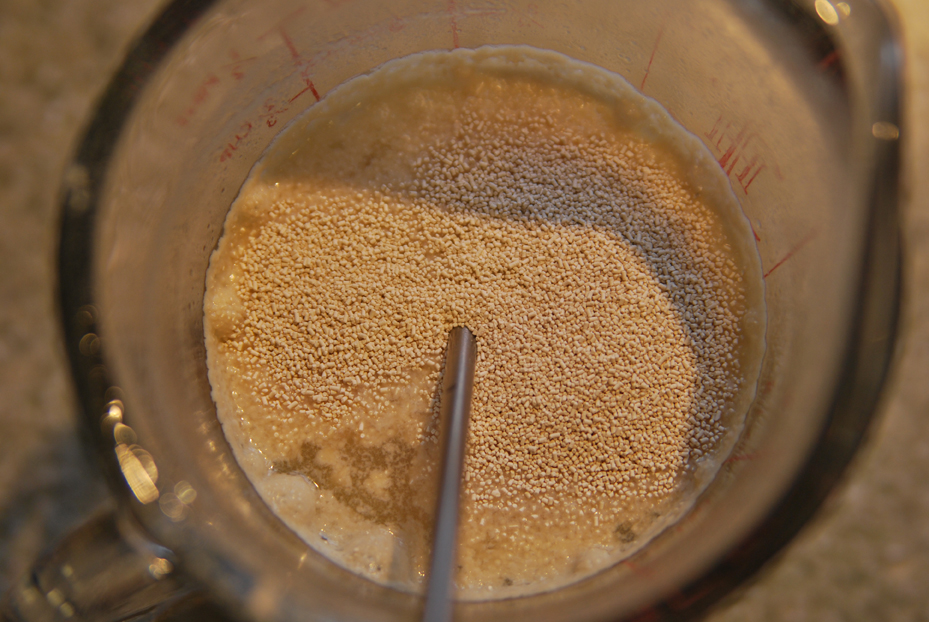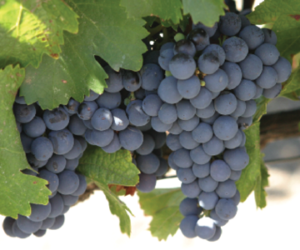
Yeast selection is one of the most important winemaking decisions as the chosen yeast strain is, to a large extent, what shapes the wine, influences organoleptic (sensory) qualities, and reduces the risk of fermentation problems.
But now, you may be asking yourself: How do I select a yeast strain with the “right” properties to achieve my style of wine with predictable results? What factors should I consider? What other resources are there to help me?
The first consideration in selecting a yeast is matching the strain to the grape variety and desired style of wine (e.g., dry vs. sweet, light vs. full-bodied, sparkling, mead, etc.), and environmental conditions (e.g. temperature, pH, rotten berries, etc.) that may work against the yeast. All too often we neglect to look at the specifications of the yeast, namely, what by-products (metabolites) are synthesized and to what extent, what are the nutritional requirements, what are the optimal environmental conditions, and how does it impact malolactic fermentation (MLF), and simply use some generic, unknown yeast strain.
To help you get started in picking the right tool for the job at hand, you will find an extensive list of yeast strains from the most popular home winemaking yeast producers (Lallemand, Red Star, White Labs, and Wyeast) on the WineMaker website. Then, with the help of our yeast selection criteria below, research yeast producers’ websites or product literature for more detailed information; they typically provide very specific yeast performance data.
Yeast selection
When choosing a yeast type and strain, you will need to consider the following yeast properties and fermentation factors based on desired results.
Type of wine: Each cultured yeast strain has been isolated and developed to allow specific grape varieties to express their full, individual organoleptic characteristics for a desired style of wine. For example, a white wine strain may be recommended for a specific varietal to allow it to exhibit its characteristic fruitiness while a red wine strain may be recommended for greater phenolic stabilization for increased mouthfeel and improved color stability. Beyond contributing to the sensory profile, strains may be specifically recommended to address specific fermentation requirements, such as restarting a stuck fermentation or favoring MLF.
Fermentation Temperature: Fermentation temperature should always be within the recommended range. Yeast activity can cease if the temperature deviates outside this range and cause a stuck fermentation. The lower temperature-tolerant yeast strains are recommended for white wine vinification where fermentation is often conducted at low temperatures, or where a cooler fermentation is desired in red wine vinification. When a cool temperature cannot be achieved during red wine vinification, a higher temperature-tolerant yeast strain is recommended because fermentation temperature will rise significantly. Higher temperatures may also lead to undesirable ester formation.
Alcohol tolerance: Some strains can tolerate alcohol levels up to 14% or 15% alc./vol. while other strains can tolerate up to 18% alc./vol. Lower alcohol-tolerant yeasts can cause fermentation to cease and become stuck when high alcohol levels are required, for example, in the production of Sauternes- or Port-style wines. For these high-alcohol types of wines, a higher alcohol-tolerant yeast strain is recommended.
Rate of fermentation: A fermentation that is either too slow or too fast can cause hydrogen sulfide (H2S), a sulfide compound that imparts an unpleasant rotten-egg or sewer smell, and which can develop into thiols (mercaptans) — sulfide compounds that impart an unpleasant rotten-cabbage or burnt-rubber smell. A moderate and steady rate of fermentation is recommended for vinification of premium-quality wines to favor maximum retention of volatile fruit aromas and extraction of other phenolic compounds although, in general, a slow fermentation is desired in whites and a quicker but steady fermentation in reds. Rate of fermentation also depends on temperature, i.e., the higher the temperature, the higher the rate of fermentation. Therefore, when selecting a yeast strain, consider the desired rate of fermentation taking into account the temperature of the surrounding winemaking area. For example, too high of a fermentation temperature will cause a yeast with a slow rate to still ferment rapidly and possibly cause a lot of yeast stress.
Foam production: Foam production is an important consideration in the selection of fermentation vessel capacity, which is also greatly affected by the amount of solids in the must that will precipitate during and after fermentation. Ferment musts inoculated with higher-foam production yeast in higher-capacity vessels to avoid overflowing. Generally, you should plan to use a carboy, pail, or other fermentation vessel at three-quarter capacity, for example, a 26-L (7-gal.) pail for fermenting 20 L (5 gal.) of juice.
Flocculation: Flocculation refers to the yeast’s ability to become flocculent, i.e., to settle out after fermentation and sediment to the bottom of the fermenter. This is an important consideration because 1) for early-drinking wines, particularly those made from concentrates or kits, sedimentation must happen quickly to allow early racking of the wine from the spent yeast and to bottle the wine early, and 2) an appreciable amount of wine is lost depending on the volume and compactness of the spent yeast that forms at the bottom of the fermenter.
Volatile acid (VA) production: Volatile acids, namely, acetic acid, and volatile acidity (VA) are vital components of a wine’s bouquet, but only in very small concentrations. At higher concentrations, volatile acids will negatively affect the quality of wines and can potentially cause spoilage; therefore, choose a yeast strain that avoids the production of VA.
Acetaldehyde production: Acetaldehyde is a by-product of alcoholic fermentation and, as in the case of VA, it can add complexity to wine when produced in small amounts. At higher concentrations, acetaldehyde will negatively affect the quality of wines; therefore, choose a yeast strain that minimizes the acetaldehyde production.
Ester production: Yeast strains should be matched to grape varieties to enable the production and release of ester compounds, higher alcohols and the many other volatile compounds responsible for shaping the aroma and flavor profile in varietals.
Sulfur dioxide (SO2) production: Although sulfur dioxide (SO2) is naturally produced during fermentation, bacteria used in malolactic fermentation (MLF) can become inhibited if the amount of SO2 exceeds the bacterium’s SO2 tolerance. Alcoholic fermentation alone may produce SO2 beyond the bacterium’s tolerance and inhibit MLF. And if you added sulfite at the start of fermentation, e.g., to inhibit wild yeast or when dealing with rot, it will further inhibit the bacteria’s ability to start MLF. If you intend to process wine through MLF, choose a yeast strain with very low SO2 production.
Malolactic (ML) compatibility: In addition, some yeast strains are more compatible than others with malolactic bacteria necessary for MLF, and so, select a malolactic-compatible yeast strain if you intend to process your wine through MLF. Where MLF is not desired, select a less compatible strain.
Hydrogen sulfide (H2S) production: H2S in excessive amounts can be detected as an unpleasant rotten-egg or sewer smell. S. cerevisiae yeast, even when properly fed, may produce minuscule quantities of H2S that cannot be detected by smell and may or may not be harmful to wine. Another source of H2S is the condition or quality of the juice or raw material, which may contain residual elemental sulfur from late applications of vineyard sprays that then gets reduced to H2S by yeast during fermentation.
Nutrient requirements: Nutrient requirements is an important consideration when producing wines where the yeast will be subjected to adverse fermentation conditions, such as in high-sugar musts, when the grapes are deficient in yeast nutrients, when using a yeast strain that produces high VA, or as a preventative measure when the source or quality of fruit or juice cannot be ascertained. Grapes from a poor, rainy, or gray rot-affected vintage will typically be deficient in yeast nutrients. Some yeast strains may also have naturally higher nutrient needs to ferment successfully. Nutrients, including nitrogen essential for healthy yeast cell growth, are recommended in all such cases to favor yeast survival, multiplication and fermentation, and to avoid potential off-flavors in the wine.
Plan, plan, plan
With this knowledge in hand, you should be able to confidently choose a yeast strain suited to your winemaking, i.e. suited to the grape variety and desired results, as well as winemaking conditions.
Before the start of winemaking season and once you have decided on grape variety to use and style of wine you intend to make, investigate any possible unfavorable environmental conditions, such as a cold fermentation area, which might be playing against your yeast. Try and remediate any potential problems as early as possible to avoid headaches during winemaking, or at least, be as prepared as possible. This is particularly good advice for unforeseen problems, such as poor grape condition (e.g. rot, where you will need to spend extra time sorting grape berries and where you will definitely need to add yeast nutrients), high pH (where you will need to manage microbial spoilage risks and decide how much to sulfite pre-fermentation, and perhaps acidify), high Brix (where you might need a stronger performing yeast strain), poor color (where you might need additional enzymes and perhaps a yeast strain that favors extra color extraction), and a whole host of other potential “surprises.”
So plan carefully and be prepared. Order your winemaking supplies early; keep a well-stocked supply of key additives such as yeast, nutrients, enzymes, sulfite, tartaric acid, deacidifying agents, and sugar (to boost Brix/SG and potential alcohol). You never know what to expect or what kinds of problems you might run into — you don’t want to be stuck on a late Saturday evening with a sluggish fermentation or other problems.
Don’t assume everything is fine with the juice you receive/purchase. Smell and taste the juice, smell during the fermentation and any mixing in the early stages of fermentation — yeast can alert you to problems when they give off H2S, for example. Being quick to act in the first half of the fermentation can avoid problems towards the end of alcoholic fermentation and beyond, with the MLF where desired. An ounce of prevention and TLC to assure a good alcoholic fermentation will allow the winemaker to reap the benefits of a clean, aromatic fermentation and maximize the potential of the wine.





